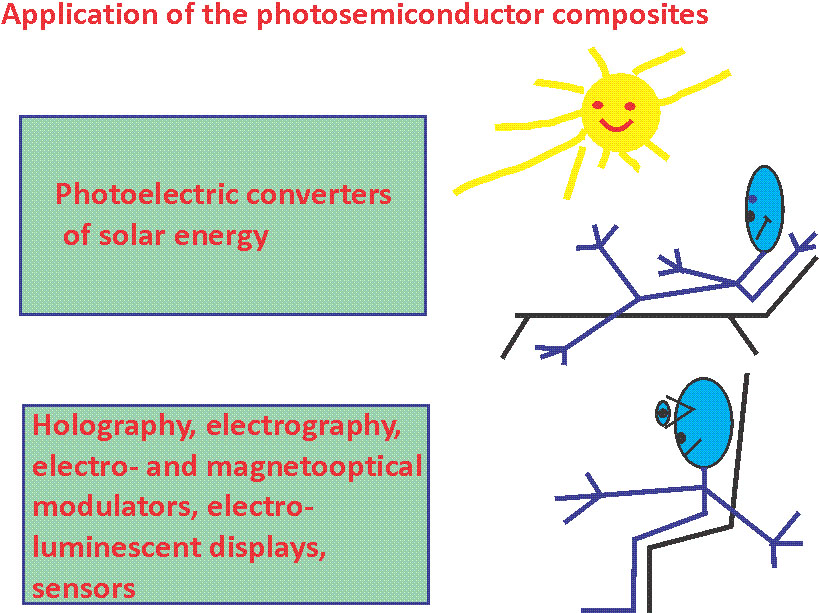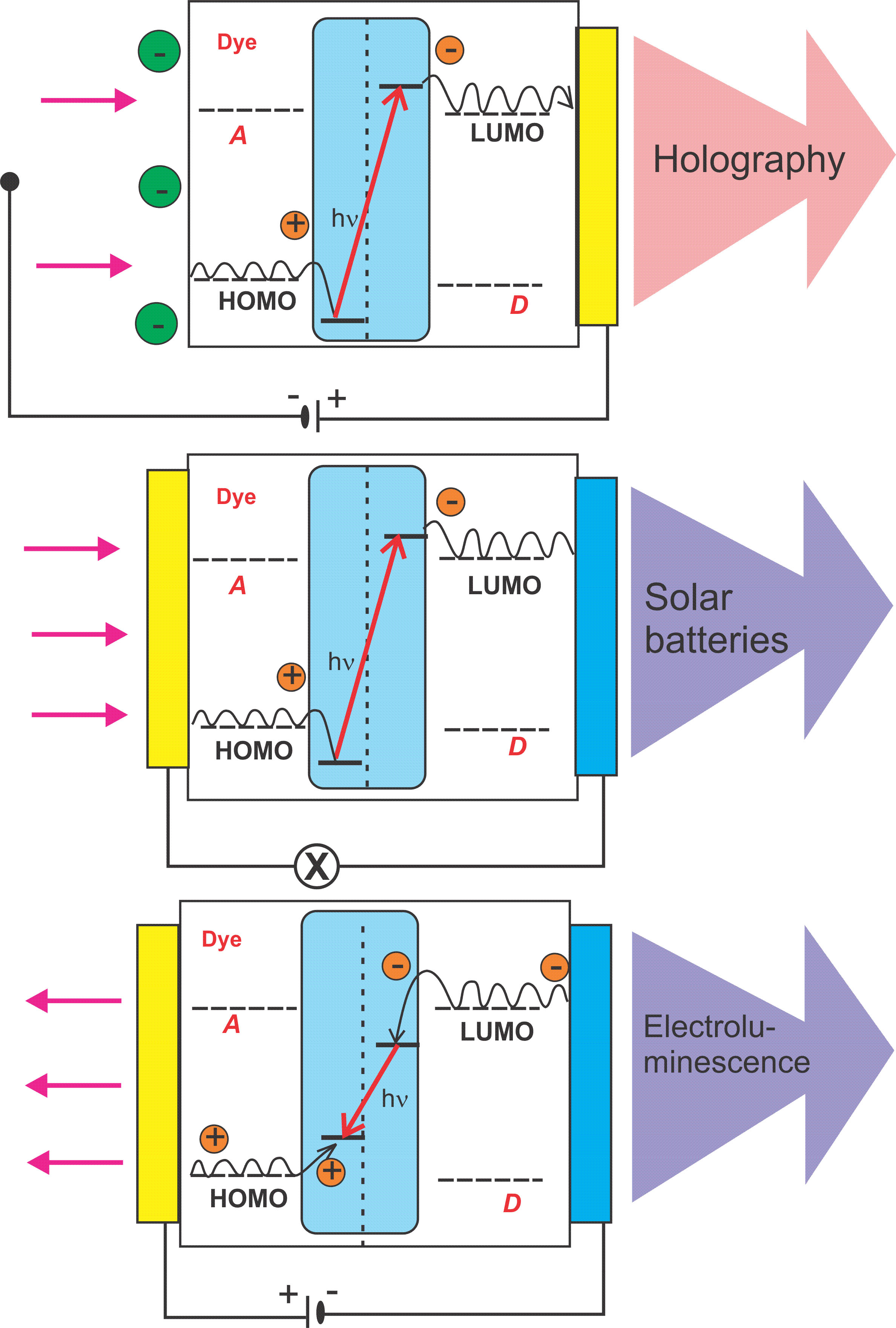Scientific interests and research methods
Scientific interests are focused on practical use of polymeric photosensitive composites: development of novel film composites with photosemiconductor properties in visible and near IR ranges with high photogeneration efficiency or bimolecular recombination of non-equilibrium charge carriers. Optical properties of these composites can be changed under influence of external electric field. These works are carried out in close cooperation with institutes of Ukrainian Academy of Sciences especially with Institute of organic chemistry. Our scientific interests also include development of the conception of search of organic dyes, donors and acceptors for employing as components of film composites which are used in media for optical information recording, for light modulation, in photoelectric converters of solar energy, in electroluminescent devices.

Main direction of scientific activity
1. Electric and photoconductivity of the polymeric composites with organic dyes, donors and acceptors. Values and kinetics of electric and photoconductivity of the film polymeric composites are investigated depending on the strength of electric and magnetic fields, temperature, light wavelength and light intensity, concentration and chemical structure of dyes, donors and acceptors.
2. Photogeneration and recombination of non-equilibrium charge carriers in polymeric composites with organic dyes, donors and acceptors. Investigation of influence of external electric and magnetic fields on spectra of the photoabsorption and photoluminescence of the film polymeric composites. Study the kinetics of changes of the spectra of photoabsorption, photoluminescence and photoconductivity under influence of the electric and magnetic fields.
3. Development of the holographic recording media for photothermoplastic technique and electronic controlling systems for this technique. Investigations of the information characteristics of the recording media using holographic methods.
4. Development of the electroluminescent media based on the film polymeric composites. Study electroconductivity and electroluminescence spectra.
5. Development of the media for photoelectric converters of solar energy based on film polymeric composites. Investigations of the photovoltaic characteristics of the film polymeric composites.
6. Development of the media for electromagnetooptical modulators and polarization holography. Study of the electro- and magnetooptical effects. Investigations of the information characteristics of the recording media by holographic methods.
7. Development of the information media based on polymeric composites with particles of molecular magnets. Investigations of the photosemiconducting properties by electrophysical methods.
Used organic polymers and oligomers basically are transparent within the visible spectral region. Therefore, as the centers of light absorption and photogeneration of charge carriers in the films of photoconducting polymeric composites (PPC) can be used either intermolecular complexes with charge transfer (CCT) between donor (D) and acceptor (A) molecules or compounds with intramolecular charge transfer (CICT) in which ones D and A are connected chemically. Also organic dyes can be employed. The organic dyes (specially monomer molecules of polymethine, merocyanine, squarine) posses narrow spectral bands of absorption and luminescence within the visible and near IR spectral ranges. Also high change of the energy of boundary orbitals of the molecules depending on their chemical structure is observed in these dyes. Such properties of the dyes are determining for their using as the centers of light absorption and reradiation in PPC. Electronic transfer between excited dye molecule and p-system of the polymeric matrix is the main condition for practical application, namely – between high occupied (HOMO) and low unoccupied (LUMO) molecular orbitals. As result, either photogeneration of charge carriers moving within the polymeric matrix in external electric field (the main demand for media for solar batteries and information recording) or capture of charge carriers in the dye molecule with formation of its luminescent excited state (the main property of electroluminescent state) can happen:

Thus, investigations of the intra- and intermolecular electronic transitions in PPC is the main direction of experimental and theoretical researches of our scientific group.